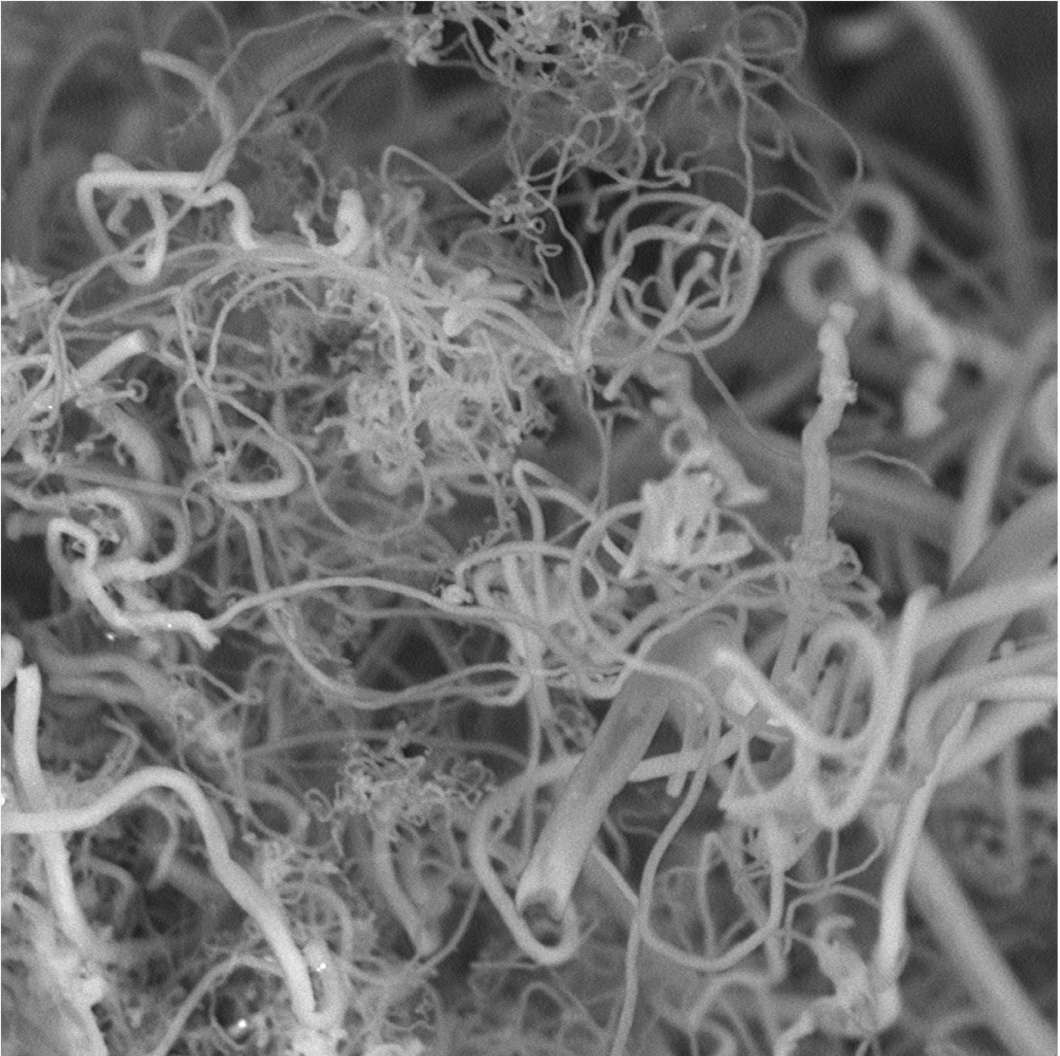Carbon nanofibers hold tremendous potential. They may one day be put to use in tougher bulletproof vests, artificial muscles or rebuilding damaged hearts, just to name a few possibilities. But could the greatest gift these little wonders offer humanity be not what they bring into the world but what they take out of it? Scientists have developed a technique that could pull the mounting carbon dioxide in our atmosphere and transform it into carbon nanofibers, resulting in raw materials for use in anything from sports gear to commercial airliners.
Led by Stuart Licht, the team from George Washington University working on the approach describe it as "diamonds from the sky." This is in part because diamonds are made of carbon, but also because of how valuable these atmosphere-derived fibers may one day prove to be.
The system takes carbon dioxide and bathes it in molten carbonates bubbling away at 1,380° F (750° C). Air from the atmosphere is then introduced, as is a direct electrical current courtesy of nickel and steel electrodes. This sees the carbon dioxide dissolve and the carbon nanofibers begin to build up on the steel electrode.
"We have found a way to use atmospheric CO2 to produce high-yield carbon nanofibers," says Licht. "Such nanofibers are used to make strong carbon composites, such as those used in the Boeing Dreamliner, as well as in high-end sports equipment, wind turbine blades and a host of other products."
One of the other strengths of the method is the small amount of energy required to power it. A hybrid system incorporating solar cells and a thermal energy collector is used to bring the bath to the required temperature, a process said to use as little as a single volt of electricity.
"Carbon nanofiber growth can occur at less than 1 volt at 750° C, which for example is much less than the 3 to 5 volts used in the 1,000° C industrial formation of aluminum,” Licht explains.
Licht claims that if the researchers were to scale up their operation to cover a physical area less than 10 percent the size of the Sahara Desert, it would be enough to cut the concentration of carbon dioxide in the atmosphere to pre-industrial levels within 10 years. And they'd be supplying plenty of materials for future manufacturing while they're at it.
With the research still in the experimental phase, the team is now looking at how best to scale up the process and how it can produce nanofibers of a consistent size. "We are scaling up quickly," says Licht. “And soon should be in range of making tens of grams (0.04 oz) of nanofibers an hour."
The research is being presented at the 250th National Meeting & Exposition of the American Chemical Society in Boston this week.
You can hear Licht describe the research in the video below.
Source: American Chemical Society
http://www.gizmag.com/c02-atmosphere-carbon-nanofibers/39015/

